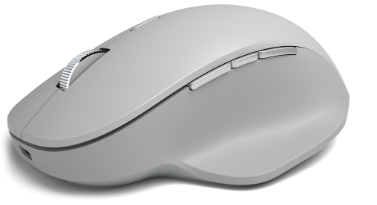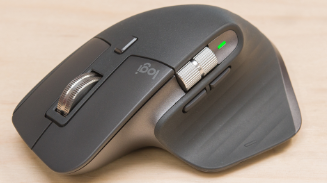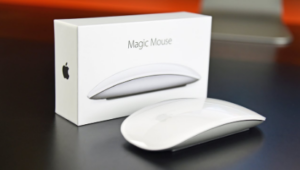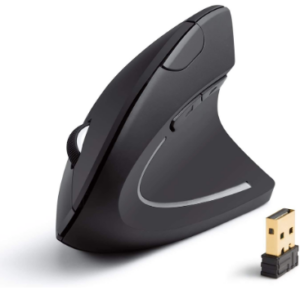Picking the Ideal Mouse for Architects & Designers
By Brenda Araujo | IT
When talking about tools that designers and architects need to bring magnificent pieces to life, a mouse is the least that comes to mind. After all, any mouse can click, scroll, and move, right? Wrong!
Picking the right mouse for an architect or a designer is something I take seriously, especially when I’m working with powerful tools and software such as AutoCAD. I believe that a mouse is like a pen that architects need to communicate all the designs they have on their heads on paper. Mouses come with moderate to adverse features that architects need for their work.
So, how can architects and designers choose the right mouse? In this article, I will talk about the best mouse for architects and designers and what to look for when buying one.
Why Choosing the Right Mouse Matters for Architects & Designers
While some people may argue that all mice work the same, I will tell you that that is not the truth. Architects and designers need to use a mouse with great precision to help them navigate intricate designs and come up with precise drawings.
A good mouse for architects and designers will offer the following benefits:
- Comfort while drawing: A good mouse is ergonomically designed to offer comfort and support. Since I spend most of my time working on designs, my grip on the mouse should be less straining and more comfortable.
- Seamless workflow switching: Since we juggle different tools and software while doing their work, architects need a mouse that can support that. We should be able to switch between different design tools with ease.
- Precision: As an experienced architect, I place significant importance on precision. I am looking for a mouse that improves my accuracy when navigating intricate details and adjustments.
- Good control: Perfect control is crucial, especially when working on detailed architectural work and 3D models. The scroll wheel and other control features should make my workflow easy.
- Easy customization: The mouse components should be easily customizable to suit specific design needs. I look for customizable gestures and programmable buttons suitable for my work to save time and bring out perfect designs.
- Enhanced versatility: A good mouth should be versatile enough to work across different devices. I need the flexibility to switch between using computers or tablets with just one mouse.
Factors to Consider When Selecting an Architect-Friendly Mouse
Grip Style
The grip style of a mouse determines how comfortable I will feel when working. Since I spend most of my time working on designs, I need something comfortable on my palms, figures, and claws. The grip of my ideal mouse should naturally align with their grip style for comfort.
Ergonomic Design
The normal aesthetically pleasing designs might not be good for architects. An ergonomically built mouse with weight and consideration is essential for making an architect’s work easier. I consider how naturally the mouse aligns with the wrist position when choosing.
Laser or Optical
DPI (dots per inch) is what differentiates laser from optical mice. When buying a computer mouse for design projects, an average DPI of 2000 will be ideal.
I consider how heavy the workload of my design project will be when choosing because the heavier the work, the higher the DIP. Mouses with 500 dpi are ideal for regular computer work.
High Precision
The best mouse for architects should offer high precision because we require it when working on various designs and drawings. Accuracy is important for detailed drawings and 3D modeling. A computer mouse with high-precision sensors allows easy movements to provide the most intricate design.
High Compatibility
A designer’s mouse should be compatible with various devices and operating systems. I need to use the features and functionalities across different software and devices. With this, I get the freedom to work on the go without needing additional peripherals.
Other Features
- Weight and size
- Adjustable DPI settings
- Battery life and charging options
- Durability and build quality
- Wireless connectivity
- Design aesthetics
- Software customization
Top Mouse Options for Architects & Designers
Now that you know what to look for in a mouse, it is time to choose the ideal one. The following are some of the best mice for architects and designers that I recommend making your work more rewarding.
Microsoft Surface Precision Mouse

The Microsoft Surface Precision Mouse perfectly caters to the need for precision while offering an elegant look. With a sleek design and comfortable grip, this is the mouse you need for long hours of your design project without discomfort.
I love this mouse because it comes with impressive customizable buttons catering to the unique needs of architects and designers. It offers the versatility needed for 3D modeling, sketching work, or rendering. The Microsoft Surface Precision Mouse ensures you get seamless design navigation to bring your creativity to life.
Logitech MX Master 3S

The Logitech MX Master 3S is another good mouse I recommend for designers and architects. I loved this mouse’s beautiful, ergonomic design, which allows for easy navigation and comfortable use. The high-precision sensor ensures I get accurate tracking and smooth cursor control.
Logitech MX Master 3S is a wireless mouse with Bluetooth connectivity options. The rechargeable battery with USB-C ensures my work is not interrupted. I get an easy charge experience with power that lasts up to 70 days. This mouse is everything an architect needs to boost creativity and productivity.
Apple Magic Mouse 2

I love Apple devices, and I believe you can never regret choosing their mouse for your designing and drawing work. Apple Magic Mouse 2 comes with a beautiful, sleek design and touch-sensitive surface ready to make your experience a magical one.
This mouse features intuitive gestures that allow architects to work on their designs in a fluid and intuitive manner. The mouse is lightweight and comfortable enough to allow architects to work on their designs for hours without feeling tired. The rechargeable battery also allows for interrupted working to enhance your productivity.
Anker 2.4G Wireless Vertical
The unique design is the first thing that attracted me to this mouse. Anker 2.4G Wireless Vertical mouse comes in an angled form to help prevent joint tension. Using this mouse for my design work, I said bye to any discomfort coming from my palm when working.

Even though it is an optical mouse, you still have the freedom to choose between 800, 1250, or 1600 DPI. The mouse has an impressive power-saving ability that allows it to automatically turn off when it remains inactive for 8 minutes. This is indeed the best high-quality and pocket-friendly mouse for all designers.
Verdict
The best mouse for architects and designers considers things such as ergonomic design and high precision. We need a mouse that offers comfort and accuracy in any design project, whether simple or complex.
The above mice have unique features and functionalities needed for any design project, making them the best contenders on my list. So, when choosing a mouse for designing, check the comfort, precision, and customization as priority features.
At Microsol Resources, we want to ensure your design work turns out perfectly using the right tools and software. Check out our Revit Essentials for Architects to learn more.
INDUSTRIES: Architecture, Buildings, Civil Engineering, Civil Infrastructure, Construction, Infrastructure, Interior Design, Manufacturing, Media & Entertainment, MEP Engineering, Structural Engineering, Water Industry







